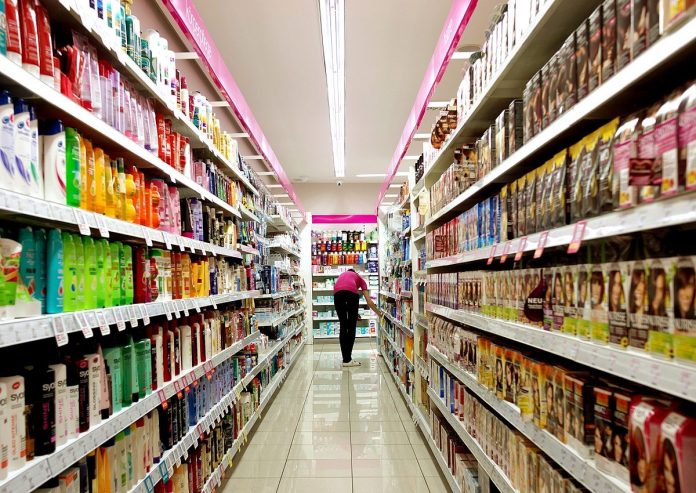
India’s fast-moving consumer goods (FMCG) sector saw a sales value contraction of 34% year-on-year in April 2020, as the Covid-19 induced lockdown impacted consumer demand. As per a BloombergQuint report citing a recent Nielson India survey, the demand for shampoos, detergents, and other non-food items witnessed a drop at neighborhood stores during the lockdown. Local neighborhood stores saw a 38% decline in value, while supermarkets and hypermarkets registered a value growth of 5%.
Modern trade fares better
Food products sold through modern trade grew 14% by value in the first phase of the lockdown starting 25 March but contracted by 12% in lockdown 2.0, which came into effect in late-April. Non-foods value contracted 28% in the first phase and fell 40% in phase two, Nielsen India said. In cash-and-carry stores, the value of food sales contracted by 2% in the first phase but recovered in the second phase to grow 20%. Non-foods witnessed a higher contraction in the first phase at 56% compared with a decline of 25% in the second.
Sales of hand wash, sanitizer, and floor cleaners through modern trade channels rose 11% year-on-year in the first phase and remained flat in the second phase. Demand for staples like packaged atta (flour) and ghee (clarified butter) was high in the first phase of the lockdown through modern trade.
In the second phase, convenience foods like vermicelli and noodles continued to grow. Other anecdotal reports suggest that the production of some instant and heat and eat food products could not keep up with demand.
Private labels gain share
Nielsen India said the selling price of essential food items increased during the lockdown due to a slowdown in retailer-led promotions and changes in brand and price mix. Private labels gained traction during the lockdown as their share increased by 5-6 percentage points from the pre-Covid-19 period.










